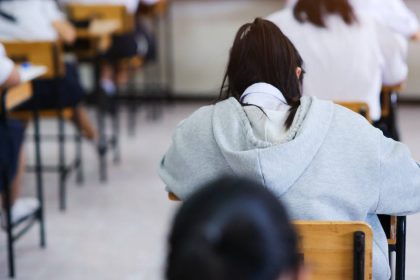Natalie says her back-to-school savings strategy started at the end of Term three in 2023.
For the Tasmanian-based single mother of two primary school-aged children, preparing for the bills associated with getting them back in their classroom meant trimming her weekly household budget any way she could and tucking the spare funds away in a separate account she builds up each year for the education-related expenses that peak in January and February each year.
“It starts with me taking a closer look at meal-planning and trying to trim here and there,” she told EducationDaily. “The next move is reducing my coffee intake – and giving up takeaways from my favourite cafe.”
In place of her creamy, frothy, favourite latte, Natalie says making the annual switch to cheaper convenience store coffees to fuel her daily habit can save her around $30 each week.
By the time she splurges again at the cafe’s version of her daily drink – usually only between March and September – it feels like, she says, “a real reward”.
This year, though, she looked for other ways to reduce her costs, including shopping around for better deals from all her energy providers and aiming to drive her car less to save on petrol – all to help save more money to meet the demands of increasingly costly school stationery lists and uniform requirements.
And she’s not alone.
Across the country, parents are set to fork out $12.9 billion in back-to-school costs, according to new data from comparison site Finder.
The research shows that Australian parents are bracing for a back-to-school budget blow-out, with spending estimated to add up to $1300 per public school student in some states.
In South Australia, the cost of putting one child through the 2024 school year at a government school is more than in any other state or territory, as data from Officeworks shows the cost of buying school supplies and uniforms has increased by $764 – or 135 per cent – compared to 2020 research from YouGov’s Annual Back to School Research Report that listed a per-child back-to-school spend of just $568.
For parents in neighbouring Victoria, the cost of buying school supplies and uniforms to increase by $341 – or 36 per cent – compared to research in YouGov’s Annual Back to School Research Report that pegged 2023 spending for families in the state at $944. Victorian parents can expect the average spend on school supplies to tally $1285 in total, with both states paying above the $1182 national average, while parents in SA will spend on average $1332 on school supplies.
The price parents pay for access to the right tech tools for school
Electronic equipment is the costliest school supply to source. Parents are expected to spend close to $500 per child nationally. It’s another area that will see SA parents spend more – coughing up an average of $655 for new technology, compared to $414 for Queenslanders and $482 for Victorians.
The Finder research, based on 1003 parents nationally, found families need to replace most supplies twice during the school year, with more than 80 per cent saying they were especially concerned about the rising cost of technology.
But the price increases don’t stop at stationery and electronics.
Finder’s data shows tuition costs across the government and independent primary school sector are also climbing, with the national average cost of a year at a private school adding up to $7922, compared to $1773 for Catholic schools and $353 for government schools.
Other associated expenses that are part of back-to-school life include transport (averaging $350 for primary students and $632 for secondary students Australia-wide), while school camps add further stress to the family budget squeeze, at an average cost of $323 (primary) and $458 (secondary).
The research also reveals that families in capital cities paid 39 per cent more in tuition fees and voluntary school contributions than those in regional areas.
Too many Australian children miss out on vital learning support
Right now, over 1.2 million Australian children and young people are living with disadvantage.
That’s the information from the Poverty in Australia, 2020, ACOSS/UNSW Report.
To help support affected families whose children risk missing out on equitable educational opportunities as a result, The Smith Family aims to help disadvantaged Australian students reach their full potential – despite their financial circumstances.
The organisation’s Back to School campaign invites Australians to help support others in need by sponsoring a child or donating money that will help enable struggling students to access the school supplies – and educational support resources – they need to succeed.
Cost-cutting adds up
For Natalie, who will continue to cull her coffee habit to help fund her family’s educational expenses as she ticks off the major back-to-school expenses that Term one 2024 will add to her already tight budget, the need for charity is not on her radar.
“I’m talking about a few financial sacrifices – getting coffee from the 7-11 for $1.50 per day, compared to $5 at a cafe – but other people don’t have enough to eat,” she told EducationDaily.
“It’s hard to tighten my budget all the time – and I don’t see it getting better in a hurry. But compared to lots of families – including families I know at my own kids’ school, I still think I’m fortunate. Back-to-school is a hard time but there’s not really an alternative. They need uniforms, they need school shoes, and they need all the other stuff, like text books and stationery and calculators. I’ll be facing these annual bills for almost another nine years. But, what’s the alternative?”







